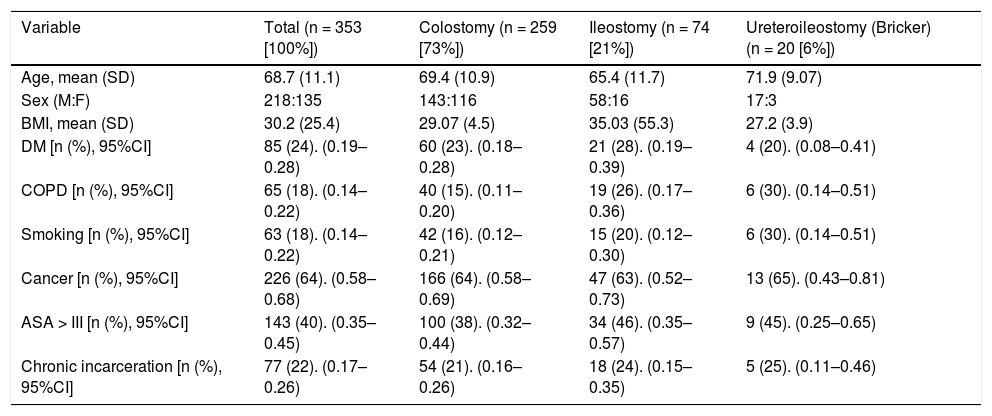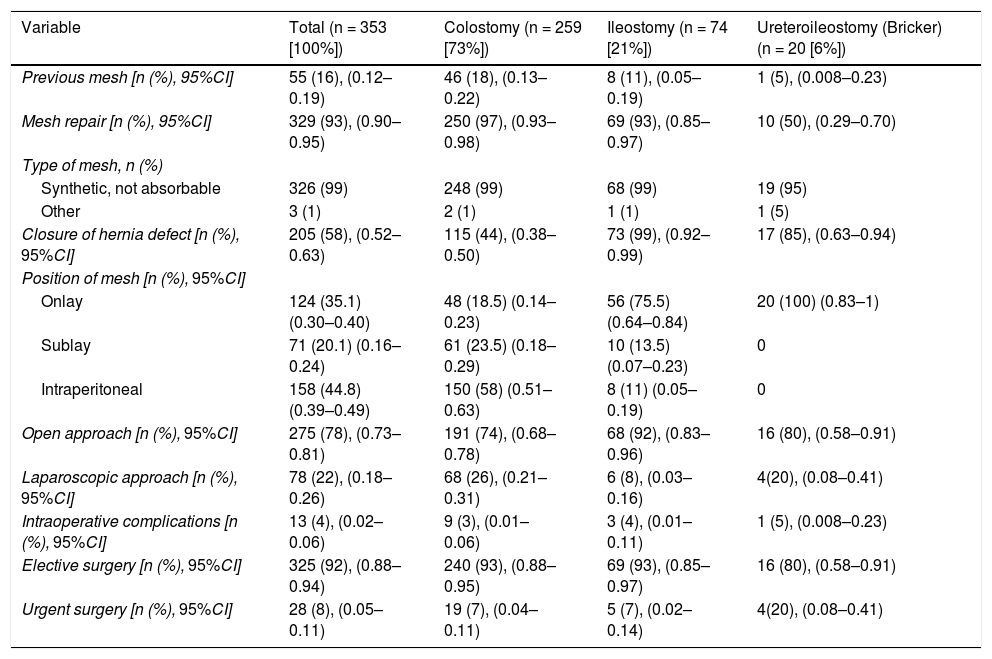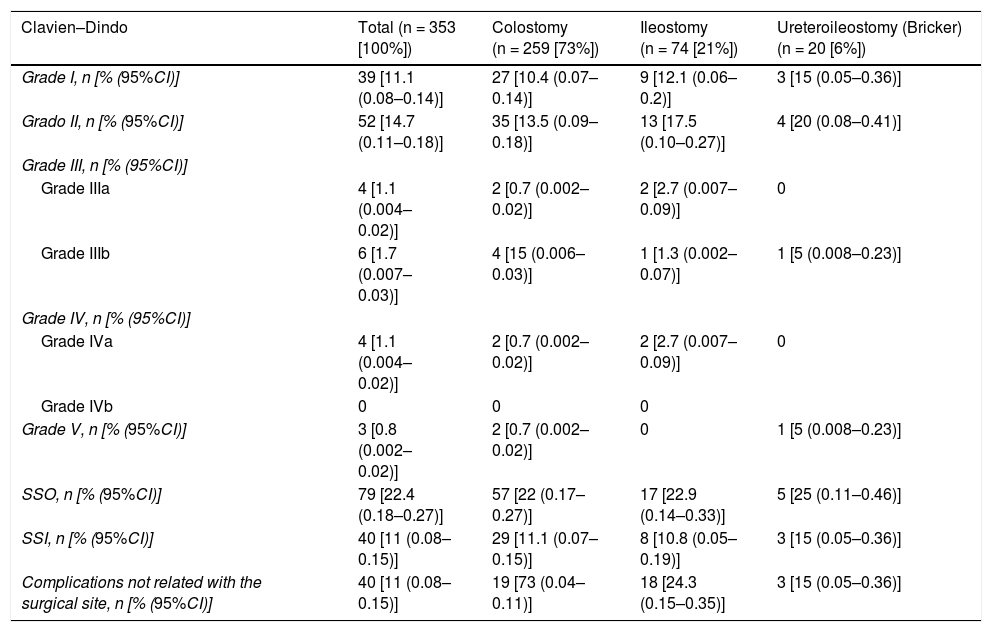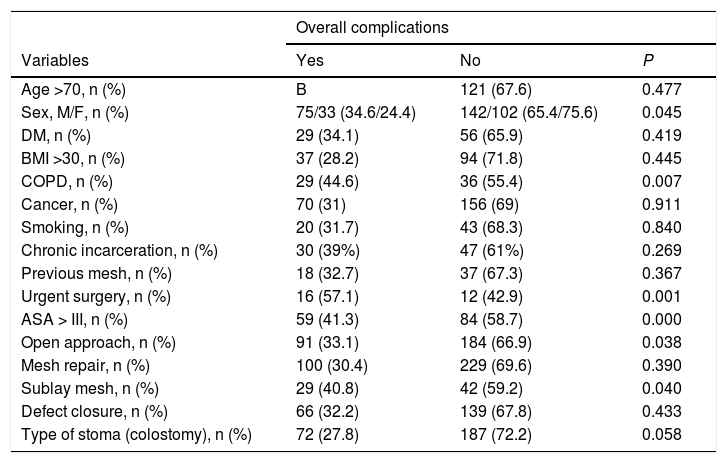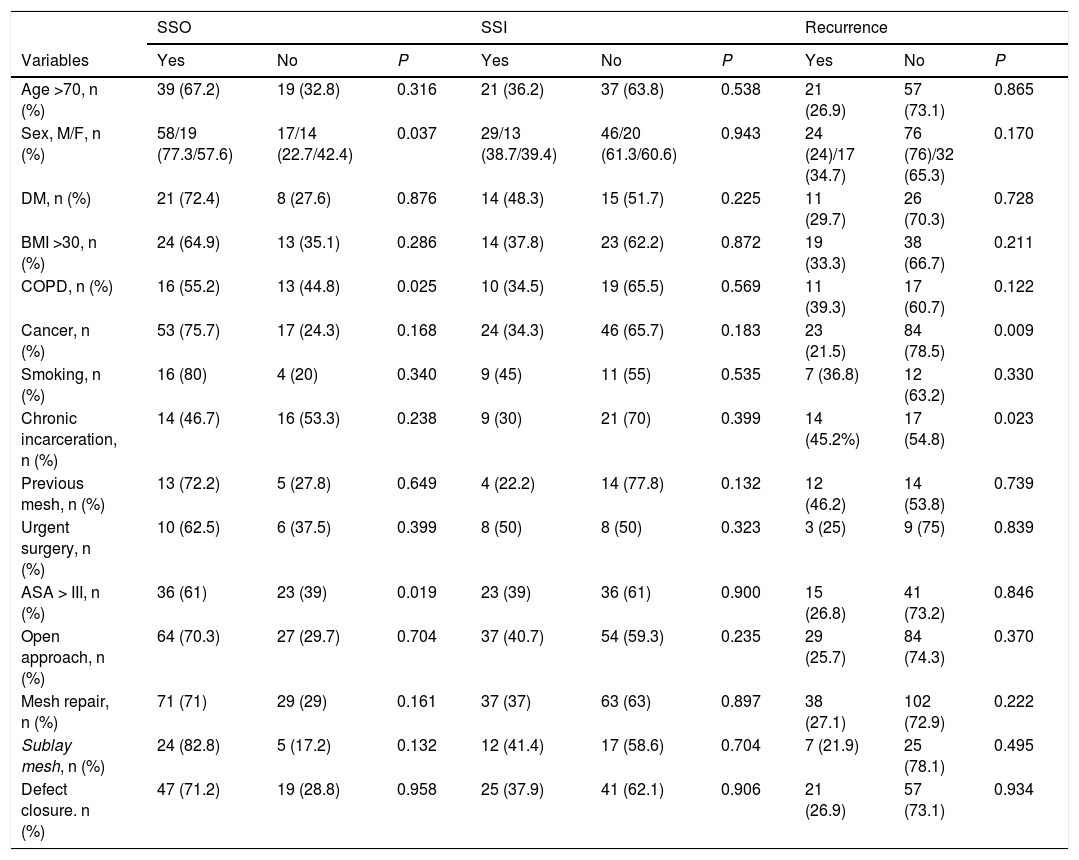The results of parastomal hernia (PH) repair based on data from registries are scarce. The objective of this work is to analyze the data collected on PH in the National Registry of Incisional Hernia (EVEREG) and thus evaluate current practices and results in PH repair.
MethodsData from the PH cohort recorded in the period from July 2012 to June 2018 are analyzed. Complications, recurrences and associated factors of the entire PH cohort are analyzed, regardless of the type of stoma they are associated with. Subsequently, the same PH group analysis was performed in relation to a colostomy (larger group).
Results353 PH were studied. Of these, 259 (73%) were PH in the context of a terminal colostomy, 74 (21%) in the context of a terminal ileostomy, and 20 (6%) in the context of a ureteroileostomy (Bricker). The global mean age was 68.7 ± 11.1 years and 135 (38%) patients were female. The open approach and elective surgery were predominant (78% and 92% respectively); 99% were repaired with a non-absorbable synthetic mesh. Global postoperative complications were high (30.6%). As well as, the global recurrence (27.5%) after a mean follow-up of 9.4 months.
ConclusionsPH repair is infrequent. PH surgery seems to be associated with a high percentage of postoperative complications and recurrence.
Los resultados de la reparación de la hernia paraestomal (HP) basados en datos provenientes de registros son escasos. El objetivo del presente trabajo es analizar los datos recogidos sobre la HP en el Registro Nacional de Hernia Incisional (EVEREG) y así evaluar las prácticas actuales y resultados en la reparación de una HP.
MétodosSe analizan los datos de la cohorte de HP registradas en el período desde julio de 2012 hasta junio de 2018. Se analizan las complicaciones, recidivas y factores asociados a ellas de la cohorte completa de HP, independientemente del tipo de estoma al que se asocian. Posteriormente, se realiza el mismo análisis del grupo de HP con relación a una colostomía (grupo más numeroso).
ResultadosSe estudiaron 353 HP. De estas, 259 (73%) fueron HP en el contexto de una colostomía terminal, 74 (21%) en el de una ileostomía terminal y 20 (6%) en el de una ureteroileostomía (Bricker). La edad media global fue de 68,7 ± 11,1 años y 135 (38%) pacientes fueron del sexo femenino. El abordaje abierto y la cirugía electiva fueron predominantes (78% y 92%, respectivamente). El 99% se reparó con una malla sintética no absorbible. Las complicaciones postoperatorias globales fueron altas (30,6%), así como la recurrencia global (27,5%) tras un seguimiento medio de 9,4 meses.
ConclusionesLa reparación de la HP es poco frecuente comparada con el conjunto de reparaciones de la hernia incisional. La cirugía de la HP parece relacionarse con un porcentaje elevado de complicaciones postoperatorias y recidiva.






